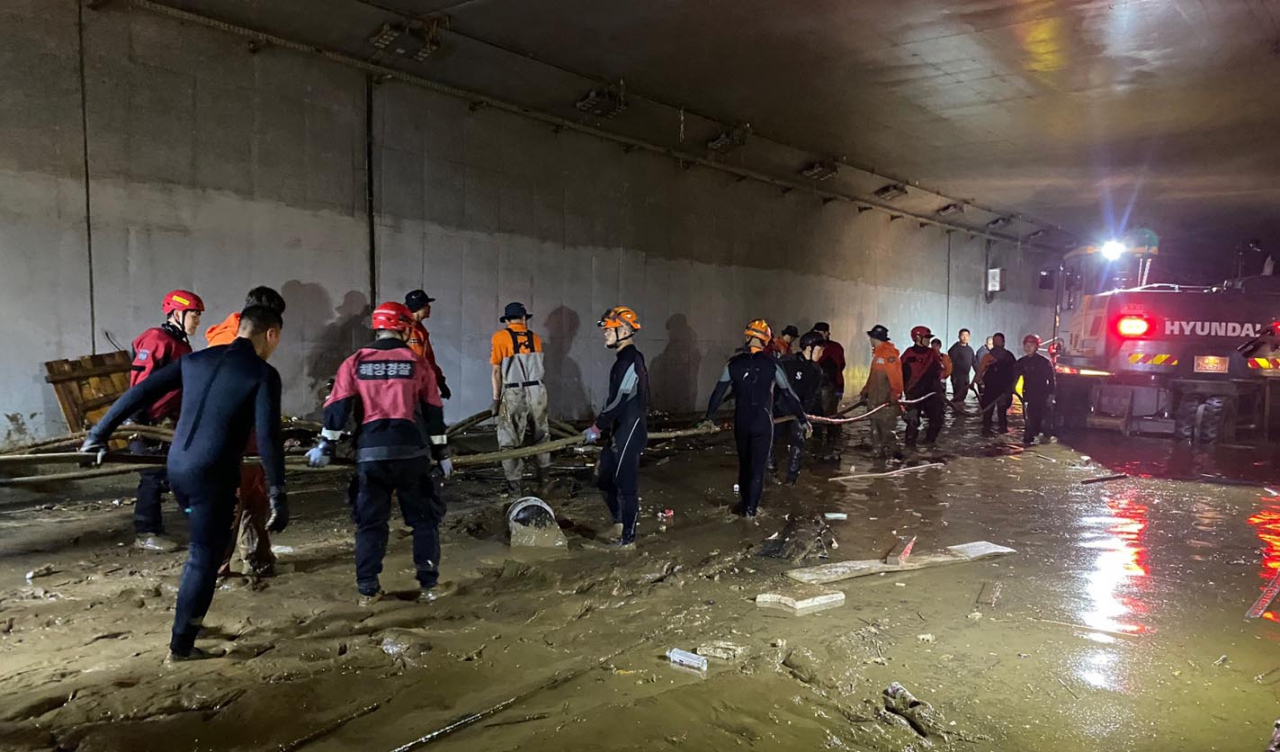 |
Officials of the Korea Coast Guard on Monday conduct a rescue operation inside the underpass in Cheongju, North Chungcheong Province, which flooded Saturday. (Yonhap) |
CHEONGJU, North Chungcheong Province -- The bullet train slowed to a near-halt as it approached North Chungcheong Province, as if the locomotive was cautious not to bring any more jitters to a region where a record July downpour has taken at least 16 lives as of Monday.
Most of the deaths occurred in the flooded underpass in Cheongju's Osong-eup, about 2 kilometers from Osong Station where the KTX train stopped.
When this reporter arrived Monday morning, the floodwaters that had engulfed the tunnel had receded to a level just above the knees. Scores of rescue workers were still searching for anyone who might still be in the tunnel.
Of the people reported missing in the disaster, one still remained unaccounted for.
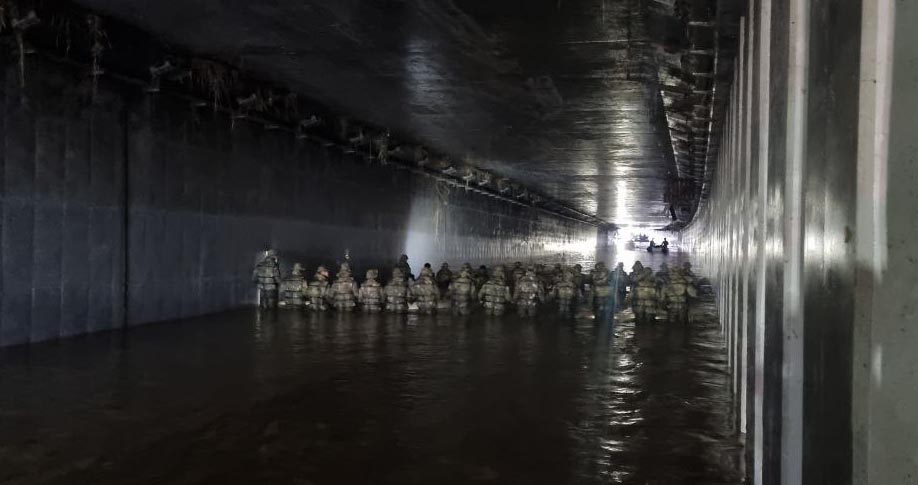 |
Officials of the Korea Coast Guard on Monday conduct a rescue operation inside the underpass in Cheongju, North Chungcheong Province, which flooded Saturday. (Yonhap) |
Authorities were looking for that one individual of a yet unidentified gender who was the driver of a Jaguar vehicle. The car was salvaged from the waters earlier, but not the body.
“The person was filmed opening the door of the car in security footage before the car was submerged. We are presuming that he or she is still there (in the tunnel). The signal from his or her phone was lost (inside the tunnel),” an official from the rescue team said.
The authorities left open the possibility that the victim’s body had been swept out of the tunnel, and that there are more victims who had not been reported missing.
The rescue operation was being conducted on both sides of the underpass, as pumping devices and divers worked frantically to secure a path into the tunnel, under ironically sunny skies. Authorities have blocked the entrance, after temporarily revealing it to the press earlier in the day.
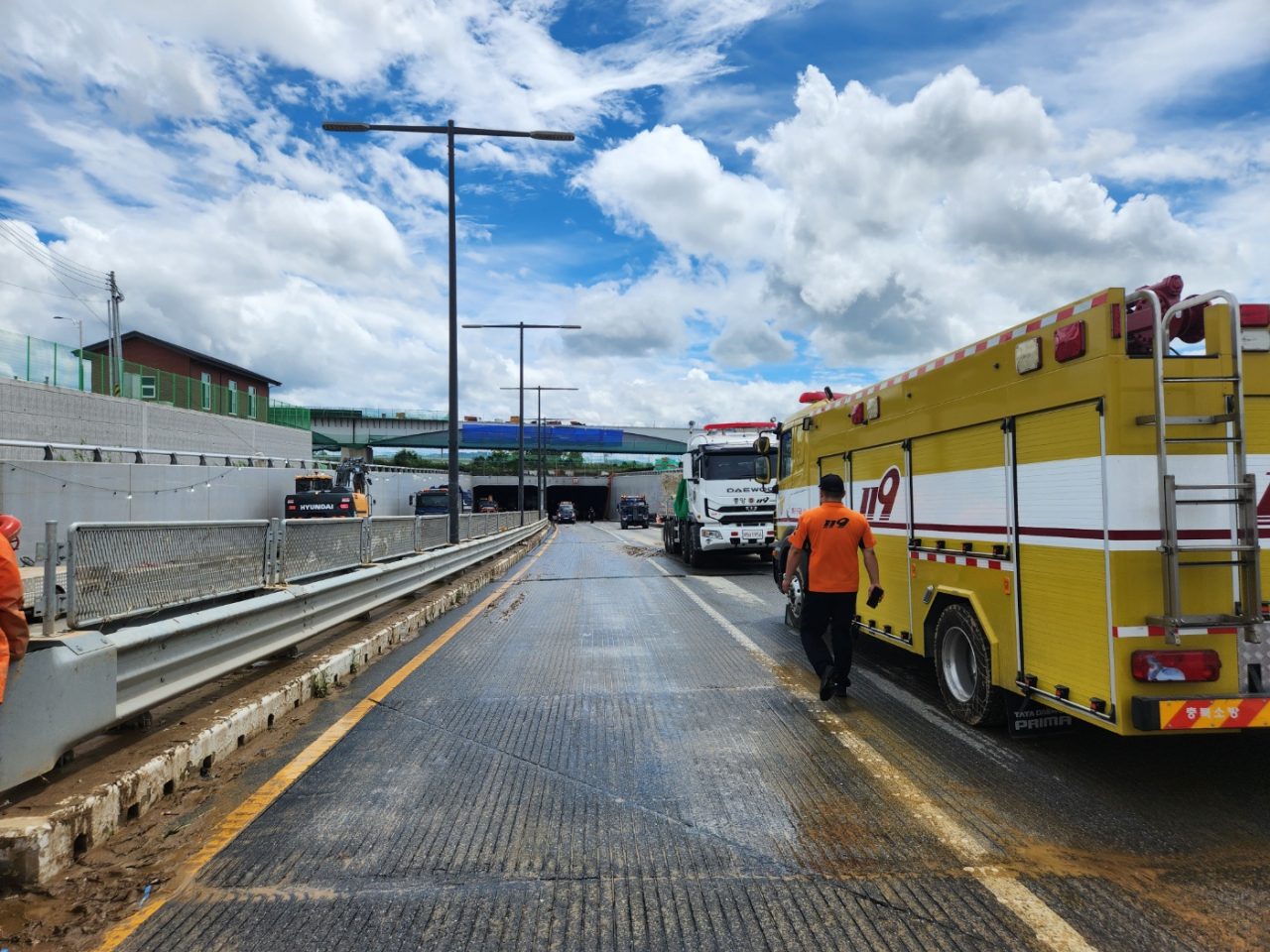 |
The underpass in Cheongju, North Chungcheong Province, which was flooded Saturday, is seen in this photo taken Monday. (Yoon Min-sik/The Korea Herald) |
At around 1 p.m. Monday, the water level was about knee-deep in the deepest part of the submerged area, while the mud was half as deep, officials said.
The rescue operators said while they have yet to reach the center of the tunnel, all cars have been salvaged from the water and are waiting to be towed out. It was initially presumed that there were 15 cars inside the tunnel, which later changed to 16 and was finally confirmed to be 17 in the briefing Monday afternoon.
Late Sunday night, four bodies were recovered from the tunnel to bring the death toll to 13. This included the 58-year-old driver of No. 747 of the Cheongju city bus network, who survivors said tried to help passengers by telling them to break the windows and escape.
In a bitter irony, the ill-fated bus was not even supposed to be there, as the monsoon rerouted it from its usual path en route to Osong Station.
The area surrounding the underpass showcased the chaos brought on by the flooding. Trees swept up by the flood were hanging on the skeletal structure of the Miho Bridge -- under which runs the Miho River that overflowed and flooded the tunnel -- indicating the intense damage inflicted by the monsoon.
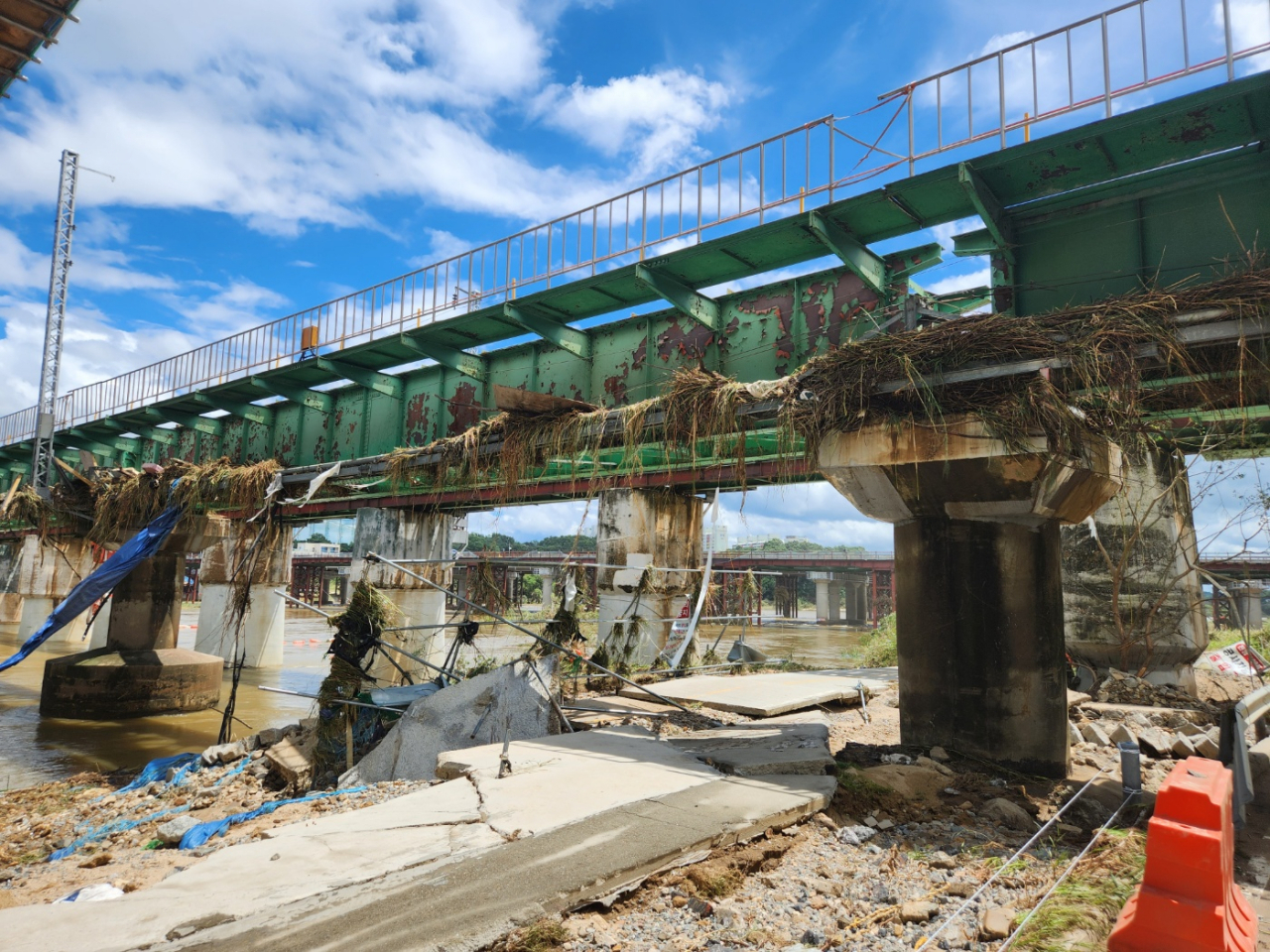 |
Shattered pieces of trees are seen hanging in the Miho Bridge in Osong-eup, North Chungcheong Province, in this photo taken Monday. The bridge is near the underpass that flooded Saturday and left 14 people dead or missing as of Monday. (Yoon Min-sik/The Korea Herald) |
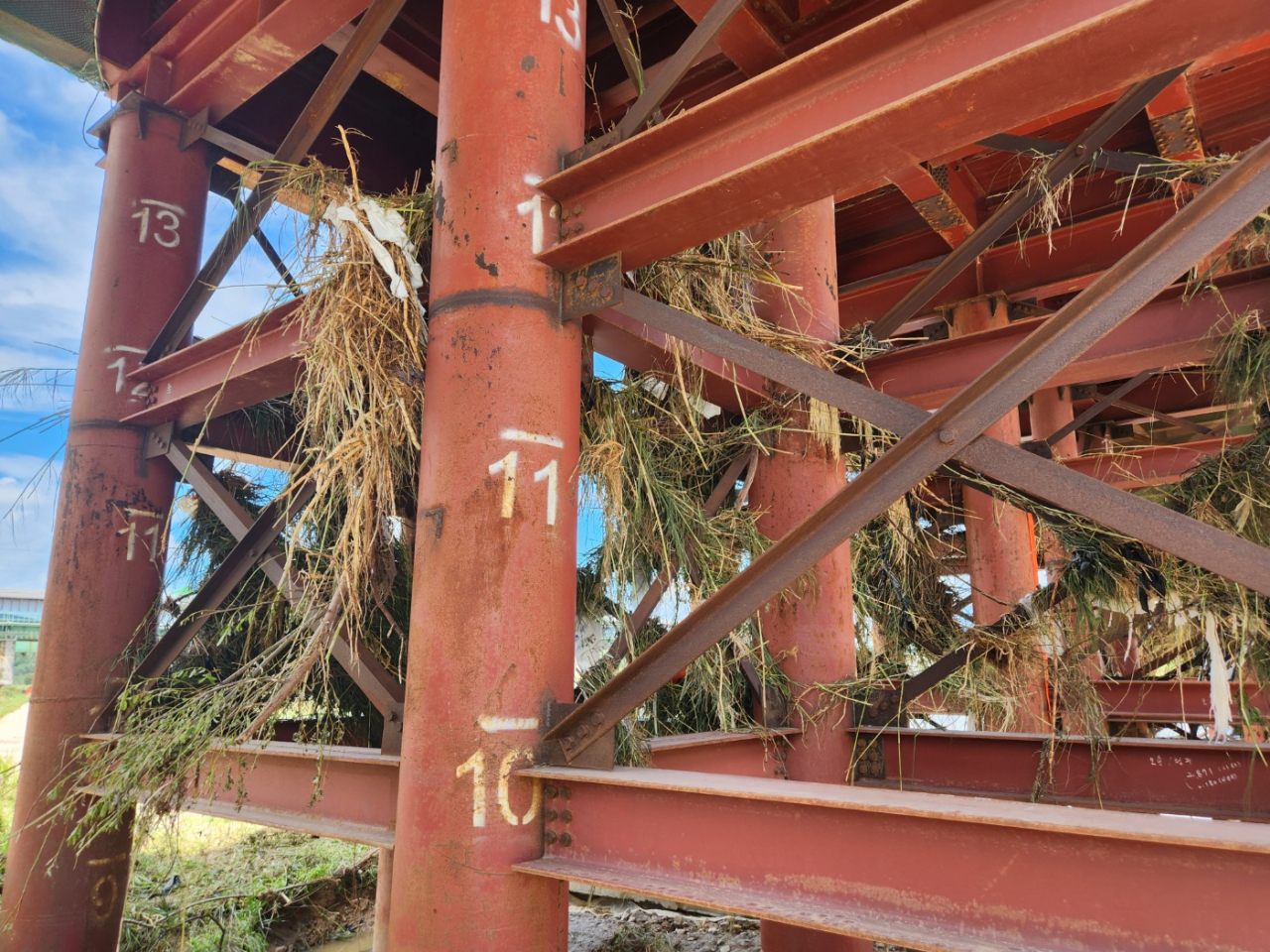 |
Shattered pieces of trees are seen hanging in the Miho Bridge in Osong-eup, North Chungcheong Province, in this photo taken Monday. The bridge is near the underpass that flooded Saturday and left 14 people dead or missing as of Monday. (Yoon Min-sik/The Korea Herald) |
Won Hee-ryong, minister of land, infrastructure and transportation, said the government will take thorough measures to ensure such an incident does not occur again. It was recently reported that a flood warning for the area around Miho Bridge was issued multiple times Saturday morning, just hours before the underpass flooded, but the regional government took no measures to control traffic around the bridge.
“It is incomprehensible that no measures had been implemented despite a warning being issued multiple times. The government will swiftly wrap up the remaining search operation. We will get to the bottom of who is responsible for this situation, and make sure they are held responsible,” Won said at the flood site.
The government will overhaul the current flood management system with “pangovernmental efforts,” he added.







![[Today’s K-pop] Blackpink’s Jennie, Lisa invited to Coachella as solo acts](http://res.heraldm.com/phpwas/restmb_idxmake.php?idx=644&simg=/content/image/2024/11/21/20241121050099_0.jpg)